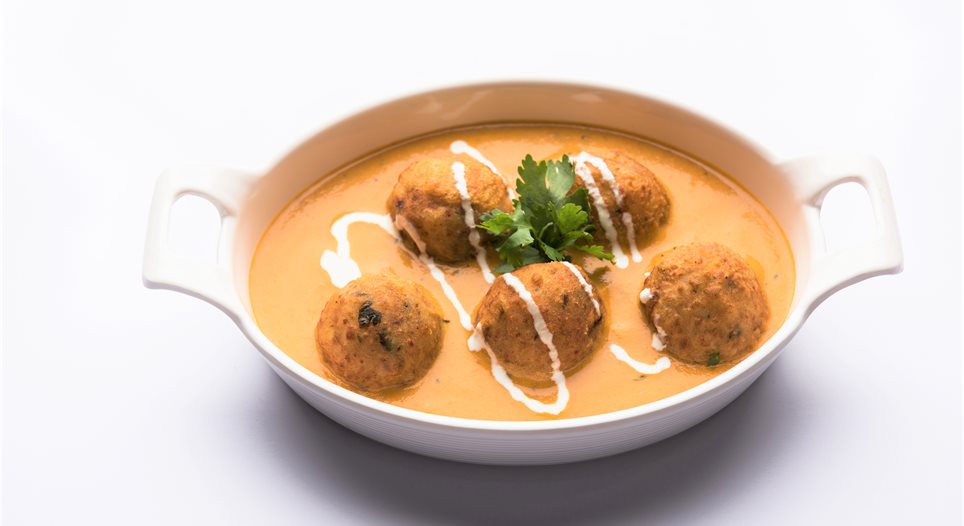Malai Kofta, a regal dish from the heart of Indian cuisine, embodies a rich culinary heritage. Rooted in Mughlai tradition, this vegetarian delight has transcended time and boundaries to become a staple in Indian households and a beloved offering in restaurants worldwide. Combining the delicate flavors of paneer (Indian cottage cheese) and vegetables, bathed in a luscious gravy, Malai Kofta offers a symphony of textures and tastes that captivate the palate.
In this comprehensive guide, we delve into the intricacies of Malai Kofta preparation, exploring its origins, ingredients, cooking techniques, and variations. Whether you’re a seasoned chef seeking to perfect your recipe or a novice eager to embark on a culinary adventure, join us as we unravel the secrets behind this timeless delicacy.
I. Origins and Evolution of Malai Kofta:
Malai Kofta traces its origins to the royal kitchens of the Mughal Empire, where skilled chefs crafted sumptuous dishes fit for kings and nobles. The term “Malai” refers to cream, signifying the luxurious texture and richness of the dish, while “Kofta” denotes meatballs or dumplings.
Originally a non-vegetarian dish made with meatballs simmered in a creamy gravy, Malai Kofta underwent a transformation with the emergence of vegetarianism in India. To cater to the dietary preferences of a diverse populace, chefs substituted meat with paneer, potatoes, and assorted vegetables, giving rise to the vegetarian version we relish today.
II. Essential Ingredients:
A. For the Koftas:
Paneer: Freshly prepared or store-bought paneer serves as the primary ingredient for the koftas, imparting a creamy texture and mild flavor.
Potatoes: Boiled and mashed potatoes act as a binding agent, enhancing the consistency of the kofta mixture.
Cashews and Raisins: Finely chopped cashews and raisins add a delightful crunch and subtle sweetness to the koftas.
Spices: A blend of ground spices such as garam masala, cumin, coriander, and red chili powder infuses the koftas with aromatic flavors.
All-purpose Flour (optional): Adding a small amount of flour helps in binding the kofta mixture and prevents it from crumbling during frying.
B. For the Gravy:
Onions, Tomatoes, and Cashews: Cooked to perfection and pureed into a smooth base, onions, tomatoes, and cashews form the foundation of the creamy gravy.
Fresh Cream: Rich and velvety, fresh cream enriches the gravy, lending it a decadent finish.
Spices and Herbs: A medley of spices including turmeric, cardamom, cinnamon, and bay leaves, along with fresh herbs like cilantro, elevate the flavor profile of the gravy.
III. Cooking Techniques:
A. Preparation of Koftas:
Prepare the paneer by mashing it until smooth, ensuring there are no lumps.
Mix mashed potatoes, chopped cashews, raisins, spices, and a pinch of salt with the paneer to form a pliable dough.
Shape the mixture into small balls or oval-shaped koftas, ensuring they are compact and free of cracks.
Optionally, roll the koftas in flour to coat them lightly before frying.
B. Frying the Koftas:
Heat oil in a deep frying pan over medium heat.
Gently place the koftas into the hot oil, ensuring they are not overcrowded.
Fry until the koftas turn golden brown and crispy on all sides, then remove them and drain excess oil on paper towels.
C. Preparation of Gravy:
Heat oil or ghee in a separate pan and add whole spices such as cardamom, cinnamon, and bay leaves.
Sauté finely chopped onions until golden brown, then add ginger-garlic paste and cook until fragrant.
Add tomato puree and cook until the mixture thickens, then add powdered spices and salt according to taste.
Stir in cashew paste and fresh cream, allowing the gravy to simmer until it reaches a creamy consistency.
IV. Variations and Serving Suggestions:
Malai Kofta offers endless possibilities for customization, allowing chefs to experiment with ingredients and flavors. Some popular variations include:
Shahi Malai Kofta: Enriched with a royal touch, this version incorporates a richer gravy made with a generous amount of cream and saffron.
Nutty Malai Kofta: By adding an assortment of nuts such as almonds, pistachios, and walnuts to the kofta mixture, one can create a crunchy texture and enhance the flavor profile.
Spicy Malai Kofta: Infused with fiery spices and green chilies, this variation caters to those craving a more intense flavor experience.
Vegan Malai Kofta: Substitute paneer with tofu and cream with coconut milk to create a vegan-friendly version without compromising on taste.
Serve Malai Kofta hot, garnished with chopped cilantro and a drizzle of fresh cream, alongside fragrant basmati rice or naan bread. Accompanying it with a side of cucumber raita or tangy pickles adds a refreshing contrast to the richness of the dish.
Conclusion:
Malai Kofta stands as a testament to the culinary craftsmanship of Indian cuisine, blending tradition with innovation to create a dish that delights the senses and satisfies the soul. Whether enjoyed at a festive banquet or savored as a comforting meal at home, its timeless appeal continues to captivate food enthusiasts worldwide. With this guide as your companion, embark on a culinary journey to master the art of Malai Kofta, and unlock the secrets of its exquisite flavor and creamy indulgence.

